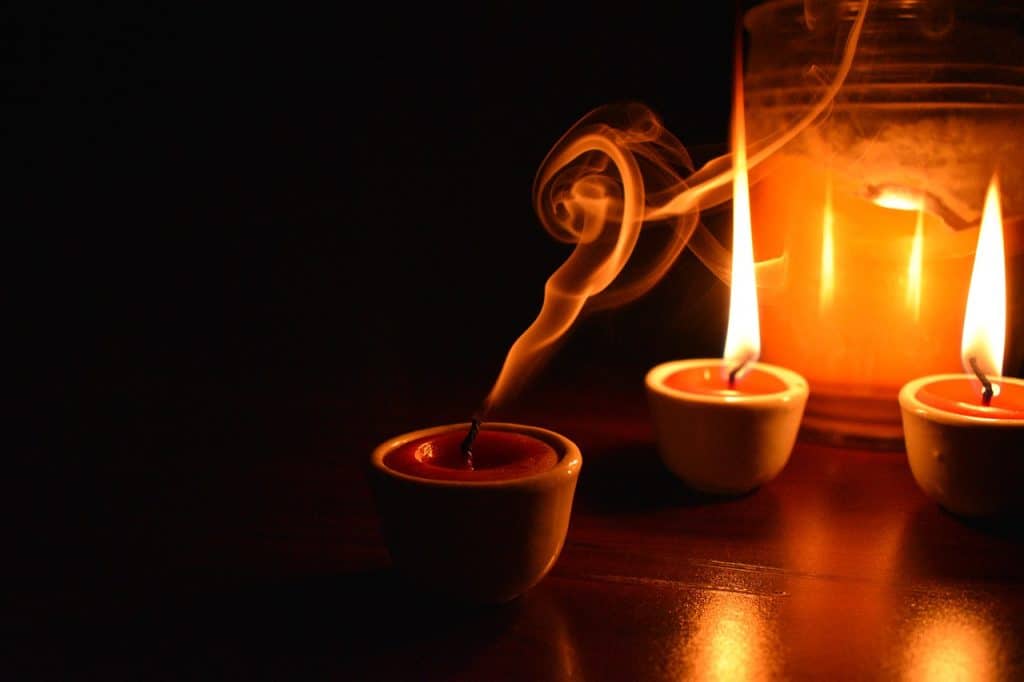Candles are light sources, although they are used for several other reasons which include, for decoration, creating romantic atmospheres (due to their soft light and sometimes beautiful aroma), for religious purpose, and for aromatherapy. They are primarily made from wicks and waxes although colorings (like dyes) and fragrance is sometimes added. The waxes are the major determinants of what type a candle would be, for instance a candle made from bee wax is generally referred to as bee wax candle. Candles can be made from many other waxes which include: bayberry wax, gel wax, soy wax, tallows (animal fat wax), spermaceti (sperm whale wax), carnauba wax, cinnamon wax, paraffin wax, palm wax and coconut.
Coconut wax is used for making coconut candles or rather, coconut wax candles. This wax is obtained from 100% high-melt coconut oil. It is sometimes used in combination with other plant based waxes most especially soy wax. Coconut oils are obtained via a simple extraction process and the coconut oil obtained through this method is hydrogenated and transformed into coconut wax. Coconut wax is creamy white in color. In the production of coconut candles, coconut wax is sometimes mixed with soy wax to help increase their melting point and avoid liquefaction.
It is important to note that coconut candles are different from coconut shell candles. While coconut candles are made from coconut wax, coconut shell candles may not be made from coconut wax. Most times soy wax is used for making coconut shell candle. They are only called coconut shell candles because the candle waxes used are held in a coconut shell.
Are coconut candles toxic?
No, they are not.
100% Coconut candles are not at all toxic. Coconut candles made from a blend of coconut wax and soybean wax are also not toxic. Candles generally are not particularly toxic, although some kinds of candles sometimes produce toxins in very low amounts that pose no threat to the health or environment. Kinds of candles that produce toxins include:
- Candles containing lead wick: lead is put in candle wicks to make them stiffer and to make the candle burn better, especially candles made from hard wax. Lead has been shown to be highly toxic, as it causes poisoning in the blood stream. It is generally advisable to avoid candles containing lead cores. Production of candles with lead wick has been banned in the United States and many other parts of the world.
- Paraffin wax candles: paraffin waxes when combusted can produce toluene which when consumed in high proportion are harmful to the body. Although studies shows that the quantity of these substances produces by candles from paraffin wax are so small that they cannot cause any damage. In spite of this one has to play safe by taking note of the following precautions when using candles made from paraffin wax:
- Make sure your room is well-ventilated; Open the windows to keep the room ventilated. Also, ventilate the room after putting out the light from candles.
- Dip candle wick in wax to extinguish rather than blowing out the fire.
- Make sure the wick doesn’t get longer than 15mm- trim if it is longer.
- Scented candles: the material used for fragrance in scented candles are chemicals but like candles made from paraffin wax, emissions from these chemicals cannot cause any significant damage. There are few exceptions of people who may be affected by the scent of these chemicals. People with asthma may have breathing problems from inhaling the chemicals. To be on safe side asthmatic patients, aged people and children should stay away from scented candles.
Candles scented with natural ingredients and essential oils are best.

All these group of candles are different from coconut candles, except if they are particularly scented and even if, they are far from being toxic. Coconut candles in their unique nature have many advantages over other candles rather than producing toxins. Some of these advantages include:
- They are eco-friendly and are highly sustainable: coconut candles are made from natural materials which are organic and renewable, thus, coconut candles have little or no environmental influence. Since coconuts are renewable, candles made from them would have assured sustainability.
- They are used as aesthetics: coconut candles often have creamy white colors which are generally beautiful to behold. Coloring coconut candle is not necessary.
- They do not smell: during extraction of coconut waxes from coconut the smell of coconut is lost, so coconut candles generally are odorless. So you don’t have to worry about them having unpleasant odors.
- They burn slowly: coconut candles burn very slow. They last long. They burn 10-15% faster than soy wax candles which is a popular slow-burning candle.
- They burn evenly: when using coconut candles, you do not have to bother about them being stuck to a side because they burn evenly.
- They hold fragrance: when coconut candles are scented, they have high ability to hold the fragrance- the fragrance lasts too, even after extinguishing the flame. This is why they are sometimes used for aromatherapy.
- They are smokelvess and do not produce soot: coconut candles are non-toxic. Unlike many other waxes, they do not produce soot when burnt and they are biodegradable.
- They adhere to containers easily: when these candles are put in containers, they tend to stick better than candles made from other waxes.
- They are easy to make: coconut candles are by far one of the easiest candles to make at home if the coconut wax is available.
- They can be used for creating sensual atmospheres: coconut candles create a warm and inviting ambience when lit in a room- what more do you need to create a sensual atmosphere?
Despite all these benefits, coconut candle may not perfect as they may be more expensive than conventional candle, (although there are cheap “coconut wax blends” which are made from a combination of coconut wax and other waxes. A typical example is a candle made from a mixture of coconut wax and paraffin wax), but they are not toxic.




